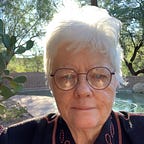The last two of our six kids were growing up, just as the others had. Time with them was feeling short. I was desperate to put the brakes on — somehow.
But they had school, I had a business, and their dad had a job.
That reality had been our life for years, due to these kids but also to their older siblings who had done the same thing. That reality had eaten up their growing-up years.
And now these were 12 and 14.
But what to do to hold on to that precious and fading time of life, parenthood?
Vacations had been glorious because we could all be together for the 4 or 6 weeks we could glean from our busy schedules.
In our case that meant in a travel trailer and its tow vehicle, our car. Or on rare occasions, just the car.
It also meant stops with relatives or at national parks in the U.S. or in Canada. Or not very often, a state park.
But 4 to 6 weeks was frustratingly short. We loved having the pair of them along, the longer the better. But where we lived, in a far corner of the US, meant extra days getting … just about anywhere.
First we would need to drive northward. Our home an hour from the Mexican border was too hot for camping in June or July, the vacation months, so the first phase each year was to make a beeline for someplace reliably cool. That often meant mountains, or maybe Canada, about 1500 miles away.
The closest areas were a long day away: Flagstaff was one, but once we were there, the cool footprint was small, not varied enough for an extended vacation. The next step was inevitably another day’s drive, until we came to another reliably cool spot, say in the upper elevations of Utah.
We would give each place a couple of days: The night we arrived to set up and settle in, the next day to see some things, take some hikes, maybe camp with some folks we knew, and then the final day to pack up, drive another 500 miles, and repeat the process.
Or sometimes we’d leave the trailer behind at a remote and attractive spot and drive into the city to visit relatives.
Next we would find another spot to drive to. And so on, throughout the month or so that we had.
It was perfect, though short. Always too short. Too short overall, and often too short in each of the spots. So the tradeoff often was, see more of this, or see something new. Keep the driving to a minimum and enjoy what the new area had to offer, or increase the driving and the novelty.
We wanted both. Both time on the road, and time when we found interesting places. But how?
So what if we could extend the time?
When you have to juggle four real-life schedules, you’re often boxed in. You don’t often think outside that small box of opportunities-in-common.
But with these last two growing up, it was now or never.
Which meant it had to be now. Now for a different way of doing things. Now to squeeze more us-time out of the same old schedule.
What could I figure out? (What could I wangle?)
I started with John. Professor of Planetary Science. Author. Father.
It wasn’t too hard to get John’s schedule tweaked so he had no teaching for one semester.
Me. Entrepreneur. Author. Mother.
I had always done my business online, going way back, so I found new ways to be wireless in our trailer, and to have enough electricity to boost the batteries.
And them? They had just changed schools. So no one would notice if they didn’t show up. (They were going into Middle School and High School.)
Unless not going to school would turn out to mean wasted years, no education, no infiltration of knowledge, diminished access to books, etc. (There was no internet as we know it, just a trickle of mobile phone service. If we stuck to the major highways.)
We were not without worries. The most significant was the insight, experienced at 4 am many mornings, that if we didn’t do it right, we couldn’t wind back the clock and redo it.
We barely knew what IT was, and we had to do IT right the first (and probably only) time.
So we did it.
This is the end of Part 1. Part 2 is all about the doing. Keep an eye out for it. And then there will be a Part 3 and probably a Part 4. Part 3: Then what happened. And Part 4: And what it’s like now, when they’re all grown up.
